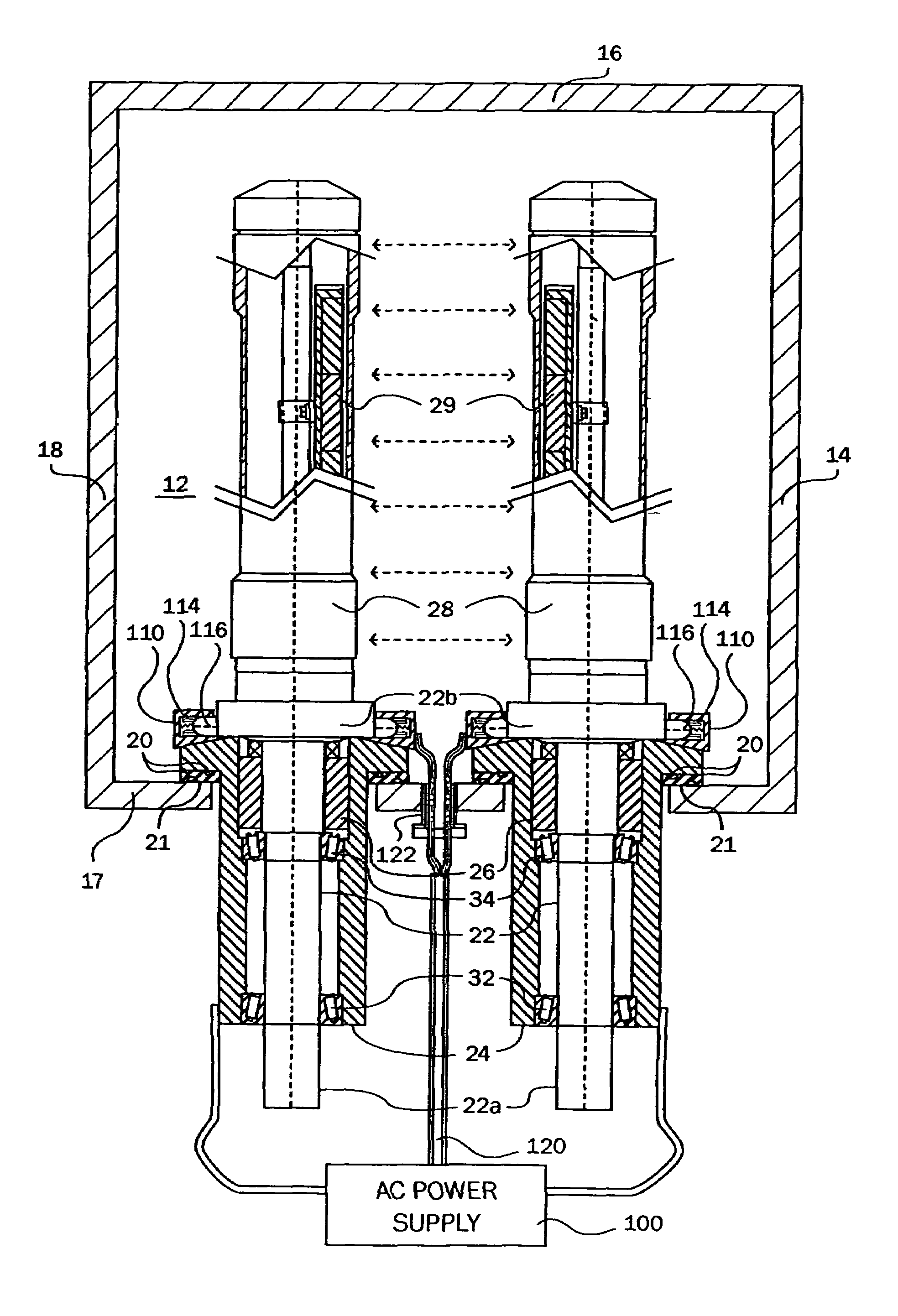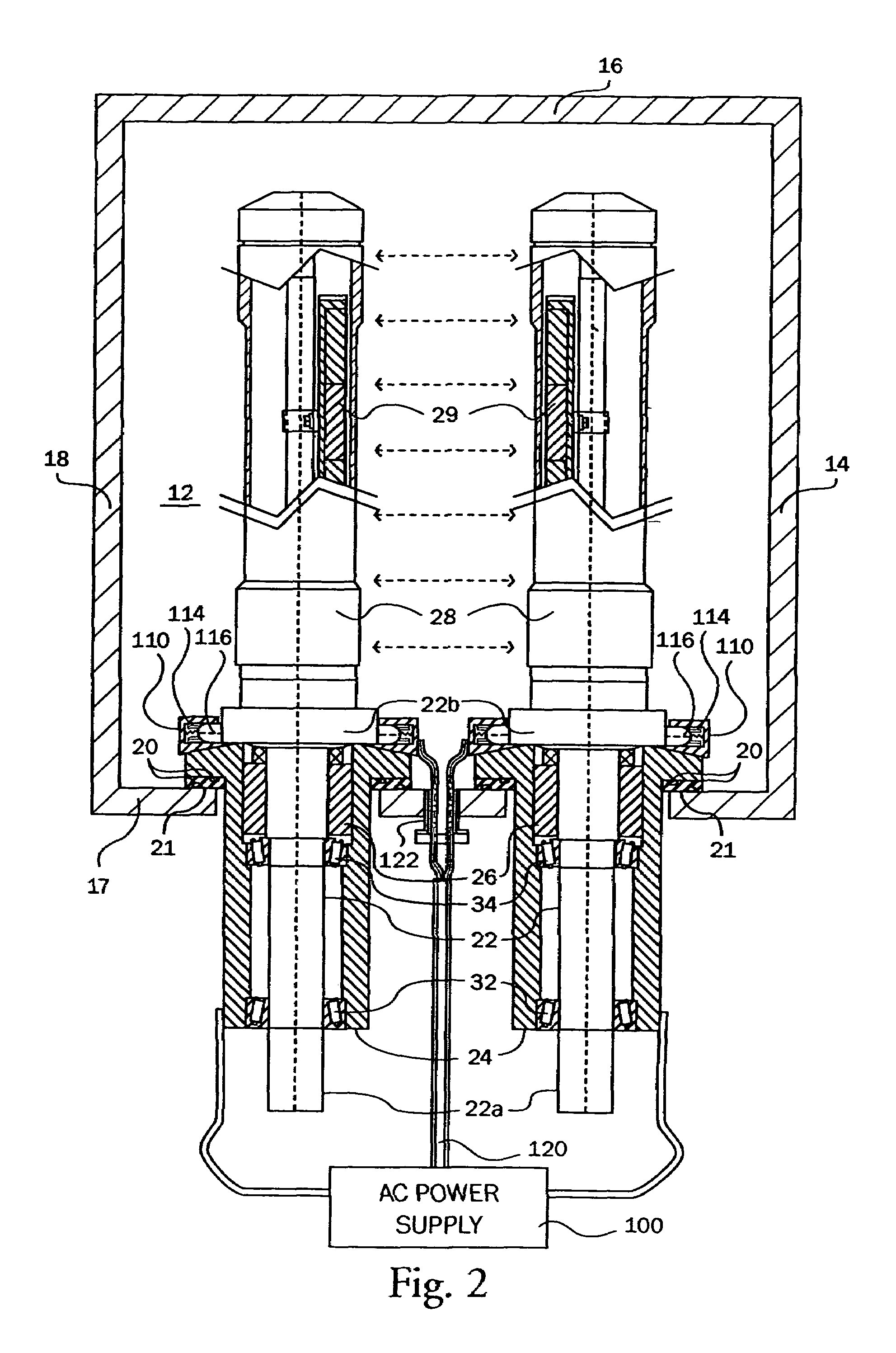Alternating current rotatable sputter cathode
- Summary
- Abstract
- Description
- Claims
- Application Information
AI Technical Summary
Benefits of technology
Problems solved by technology
Method used
Image
Examples
Embodiment Construction
[0033]The present invention will be described in terms of a rotatable sputter cathode and more particularly a horizontally disposed cathode although this invention applies equally to vertically disposed cathodes. Further, the teachings of the present invention may be utilized in any type of sputter cathode, whether rotatable or not, that experiences current induced heating. Although the invention has application to cathodes using a DC power source, it has particular application to cathodes and sputtering processes driven by a fluctuating power source. This may include standard alternating current (AC), square or pulsed direct current and bipolar direct current, among others.
[0034]As shown in FIG. 1, the present embodiment is a cantilever mounting arrangement for a rotating sputter cathode 10 disposed in an evacuable coating or vacuum chamber 12. The coating chamber 12 may further comprise a floor 14, a side wall 16, a side wall 17, and a top wall 18 connected as illustrated in FIG. ...
PUM
| Property | Measurement | Unit |
|---|---|---|
| Electrical conductivity | aaaaa | aaaaa |
Abstract
Description
Claims
Application Information
 Login to View More
Login to View More - R&D
- Intellectual Property
- Life Sciences
- Materials
- Tech Scout
- Unparalleled Data Quality
- Higher Quality Content
- 60% Fewer Hallucinations
Browse by: Latest US Patents, China's latest patents, Technical Efficacy Thesaurus, Application Domain, Technology Topic, Popular Technical Reports.
© 2025 PatSnap. All rights reserved.Legal|Privacy policy|Modern Slavery Act Transparency Statement|Sitemap|About US| Contact US: help@patsnap.com



